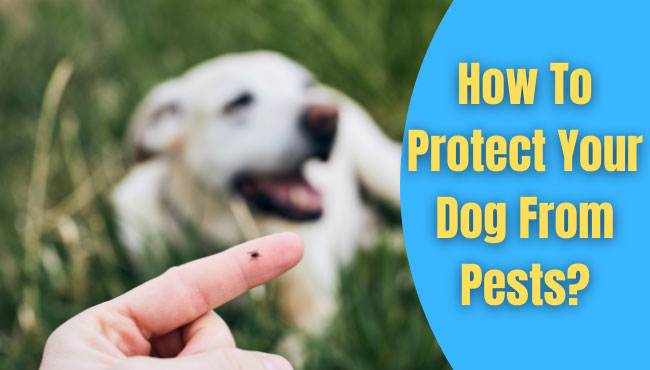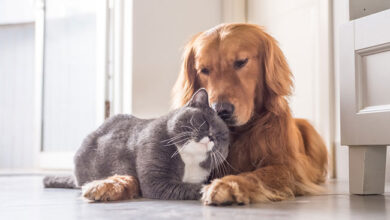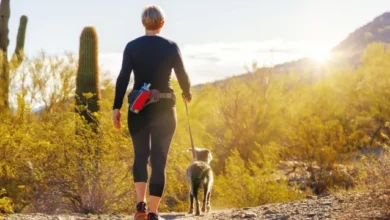
Ticks and fleas are common summertime pests that can affect your dog. It is essential that you check your pet frequently for signs of these insects. Some of the symptoms include scratching, excessive licking, and abnormal behavior. You can remove the ticks with forceps by slowly and steadily pulling. To prevent further infestation, use a de-sexing shampoo that is safe for dogs and people.
Read More:
- what causes ticks in dogs? How to Prevent Ticks in Dogs?
- Necessary Routine Care Tips For Dogs That You Shouldn’t Skip
- 3 Reasons for Excessive Dog Scratching
- 8 Things You Can Do If Your Dog Has Flea Issues
- How To Save Your Dog From The Dangers Of Bed Bugs
It’s important to make sure your dog doesn’t have ticks and other bugs. Be sure to use a repellent that is safe for your dog. This will ensure that your dog does not get into a situation where it is bitten by a dangerous insect. Even if you have a dog with no allergies, it can still get bit by ticks. You should make sure that the area around the affected area is thoroughly cleaned with alcohol.
One of the most important ways to protect your dog from pests is to bathe them regularly. By keeping your dog clean and healthy, you will make it more difficult for pests to find their way inside. Cleaning your dog’s fur is an excellent way to keep it sanitary and free from bugs. Insects are attracted to a variety of surfaces, so a good home-owner will make sure that the area is properly screened and protected.
Here are some tips for keeping your pets safe from fleas, mosquitoes, ticks, and other pests that can make their lives miserable (and even put them in danger of contracting life-threatening illness). Take these seven simple steps to get started.
1. Shampoo early and often
Grooming your pet is an essential part of caring for them. Take note that dogs with loose facial skin or wrinkles need extra scrubbing, so doggy bath time has never been more important! You can also check under their fur to make sure they don’t have any pests climbing on top—and if you find anything suspicious, immediately take steps towards treating it before things get worse.
Because pests are drawn to blood, it is critical to close any wounds.
2. Indoors at dawn and dusk
Keep your pets inside in the morning and evening to keep mosquitoes from biting them, and don’t let them outside when mosquitoes are out.
3. Check that your lawn isn’t a hairy mess
Keep in mind that dogs with loose facial skin or wrinkles require more scrubbing. Grooming should be accompanied by a thorough examination of the pads of their feet to remove any debris and to look for ticks or other pests under those tufts of fur. What is the significance of this? Because pests are drawn to blood, it is critical to close any wounds.
4. maintain a clean and well-maintained yard
It is important to maintain a clean and well-maintained yard. A clean yard will keep out pests and keep your dog healthy. You should also pick up after your dog and do not leave uncontained trash outside. Lastly, you should make sure that the area where you feed your pet is clean and free of any debris. Keeping the food area clean is essential to prevent the development of pests.
To protect your dog from pests, keep your yard area clean. Properly-maintained yards will be free of pests. Your dog needs to be well-fed to be healthy, so keep your dog’s food and water bowl clean. It’s also crucial to keep your dog’s environment tidy. Keeping your pets in a tidy environment will help prevent them from getting sick.
5. Tidy up inside and out
A clean house is the best way to prevent pests from nesting and reproducing. This includes regularly vacuuming carpets, floors, furniture, and even bedding. Replace ripped window and door screens. Unclog gutters and clean up any outside surfaces where rainwater can collect. Also, change the water in the bowls on a regular basis. Mosquitoes do not belong anywhere near where your pets play. So clean out your flowerpots, birdbaths, pool covers, and even the area around your outdoor faucet and sprinkler system.
6. Check frequently for fleas and ticks
Summertime is the ideal time for ticks and fleas to breed. Because of their minuscule presence beneath fur and on skin, you must be vigilant in checking not only for the pests themselves, but also for signs of their presence. Excessive scratching and licking, as well as other signs that your pet is unusually irritated, should be observed following a run in the park or a romp through the nearby woods.
If you find a tick, make sure to remove it right away by following the CDC’s recommendations: To ensure a complete removal with nothing left attached, use forceps or tweezers to grab hold and pull slowly and steadily. When finished, flush it down the toilet or wrap it in tissue and toss it in the trash. Afterward, always wash your hands.
7. Insect-resistant clothes
The right clothing is essential for protecting your dog. Insect-resistant clothes are a must for your pet. You should also make sure that you equip your dog with a dog leash and harness.
How Do I Know If My Dog Has Fleas?
Firstly, you need to know what fleas look like. They’re tiny and brown in color. They can be easily seen with the naked eye. To check for fleas, part your dog’s hair and look for dirt and coffee grounds. Adult fleas can be identified by their jumping movement and odor. If you find them on your dog, treat them immediately.
Adult fleas are brown or black and easily visible with the naked eye. You can use a fine-toothed metal comb (available at a local pet supply store or vet’s office) to check your dog’s fur. If you cannot find any signs of adult fleas, wash your dog’s fur with soapy water to remove the parasites.
You can also look for red pimples on your pet’s skin. These pimples may be anywhere on your dog. Additionally, if your pet has an infestation of fleas, it might shed its coat or experience hair loss. If your dog has fleas, treatment is essential to prevent the development of more serious diseases. Fortunately, adult fleas are easy to identify and can be easily identified with the naked eye.
Adult fleas are tiny and reddish brown. They’re difficult to see, but they’re usually about an eighth of an inch long. They’re flat and have large back legs. A single adult flea can lay as many as 100 immature fleas. Depending on the severity of the infestation, you can apply a topical treatment for fleas.
How To Prevent Fleas On Dogs?
What is the best way to prevent fleas on dogs? The most common method is to bathe your dog as often as possible. This will keep your dog’s fur clean, and it will also help kill the adult fleas. However, the problem arises when you try to eliminate the fleas at an early stage. The adult fleas will hatch days or weeks after you treat the dog, leaving your dog open to another infestation.
You can treat your dog’s coat with essential oils. The essential oils are effective in repelling fleas. The best ones are peppermint, eucalyptus, and rosemary. They do not kill fleas immediately, but they do kill eggs on contact with your dog. Therefore, if you use essential oils on your dog, you should use them on a regular basis.
You can also use flea shampoo on your dog. It is important to apply the shampoo on your dog’s fur, as it kills the fleas from all stages of their life cycle. You can apply this to your dog’s bedding, but this option may not be suitable for all dogs. Using a collar is also an effective way to control fleas. By keeping your dog’s bedding and home treated, you can prevent the infestation of fleas and ticks.



